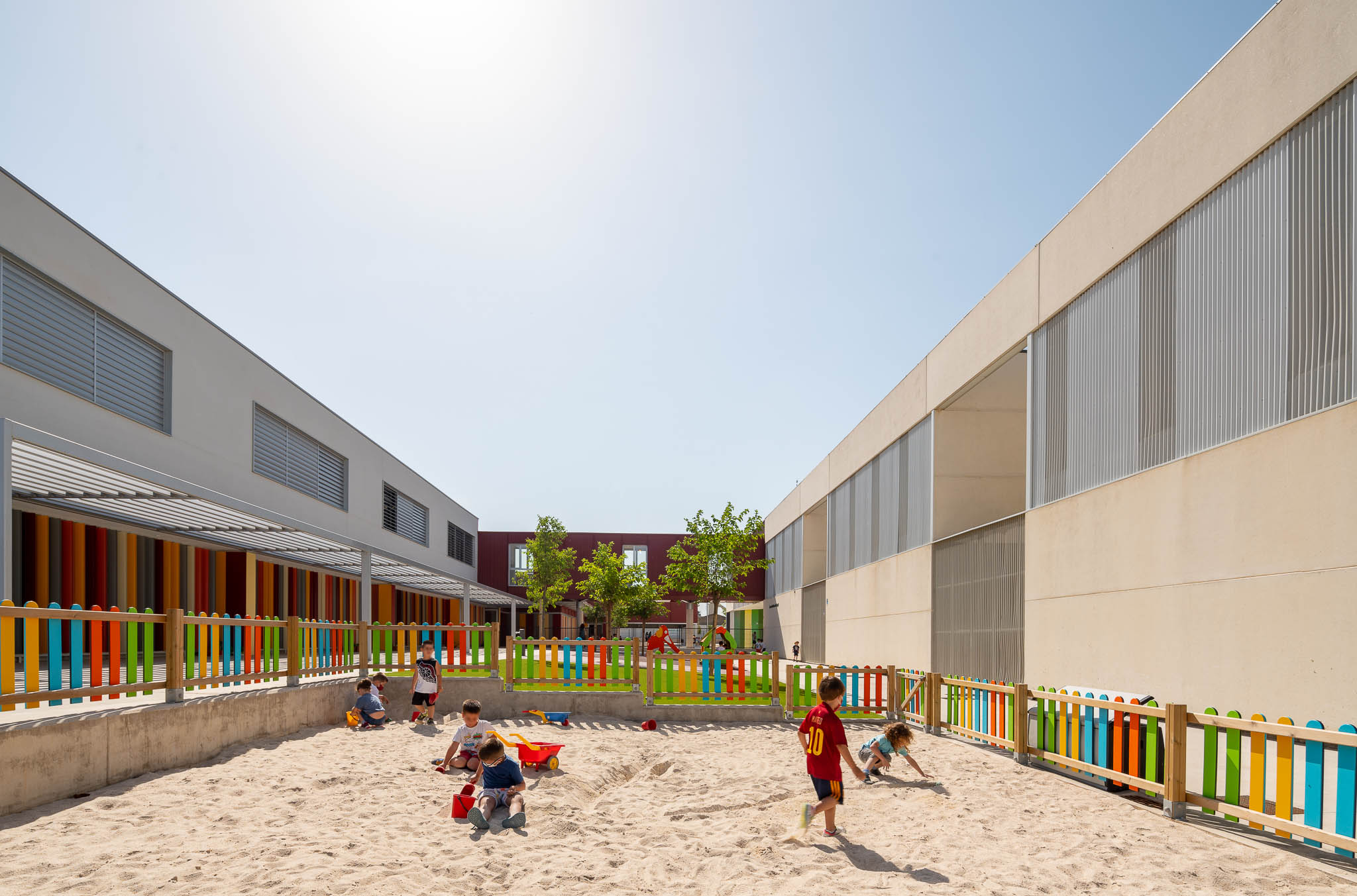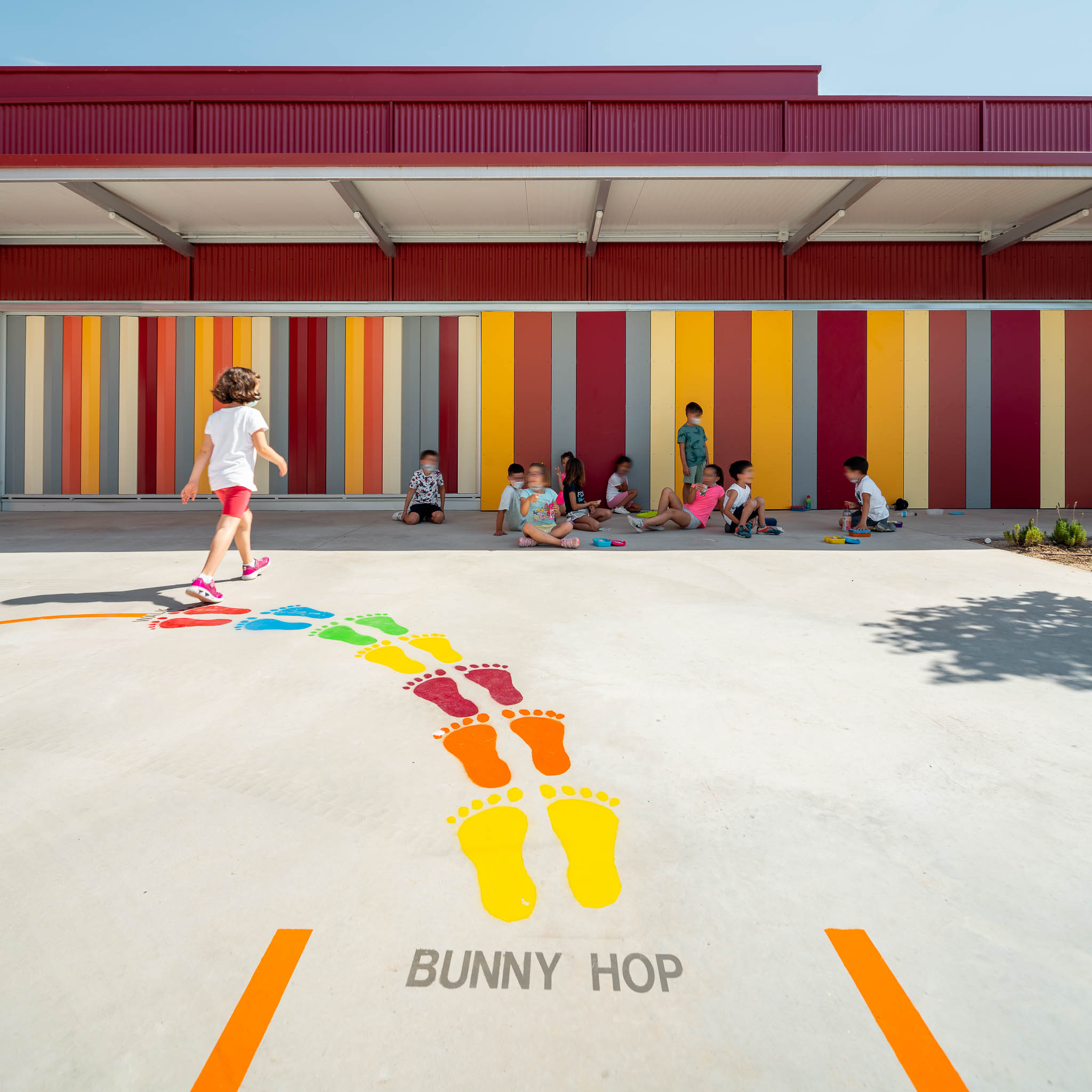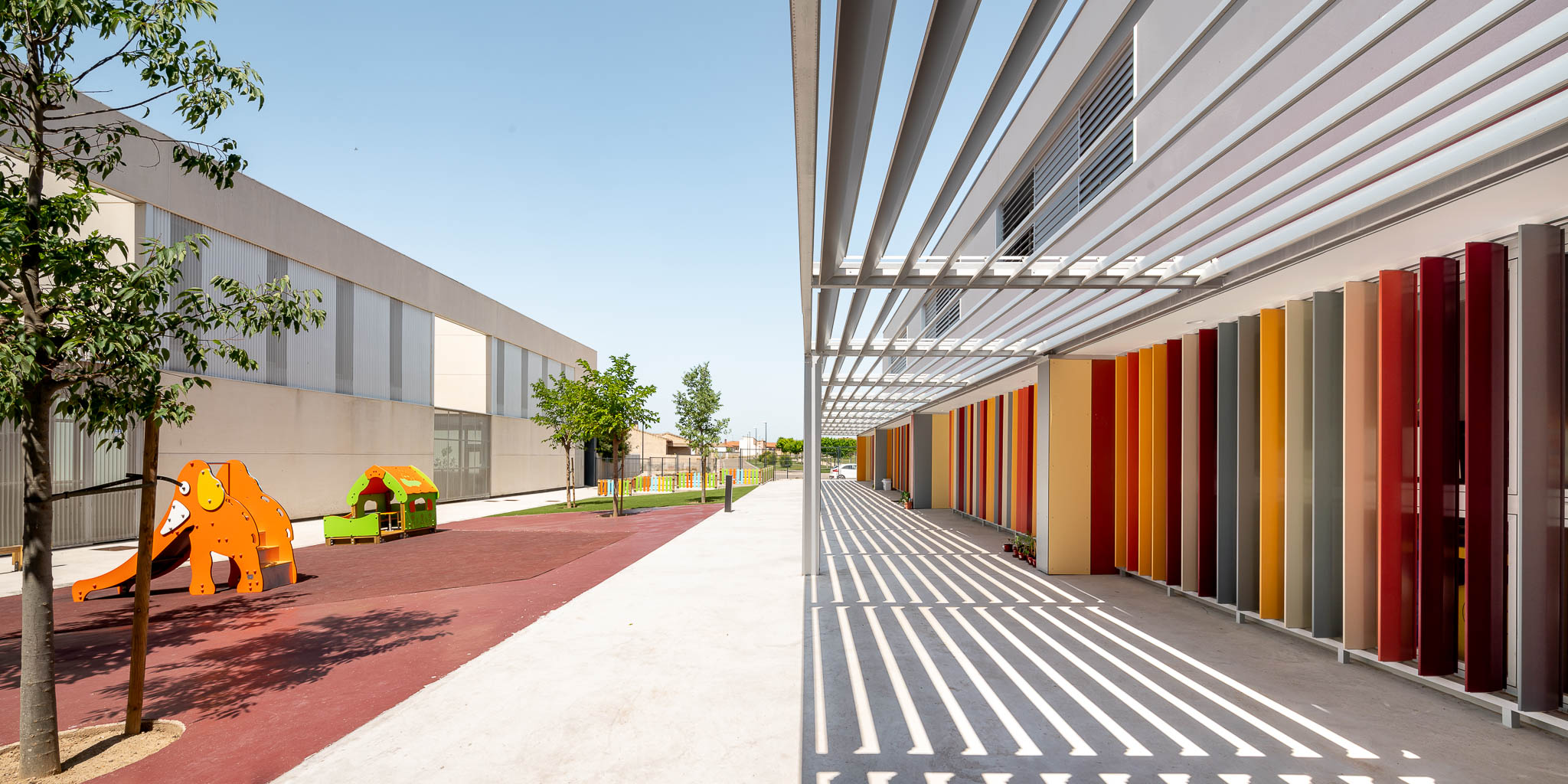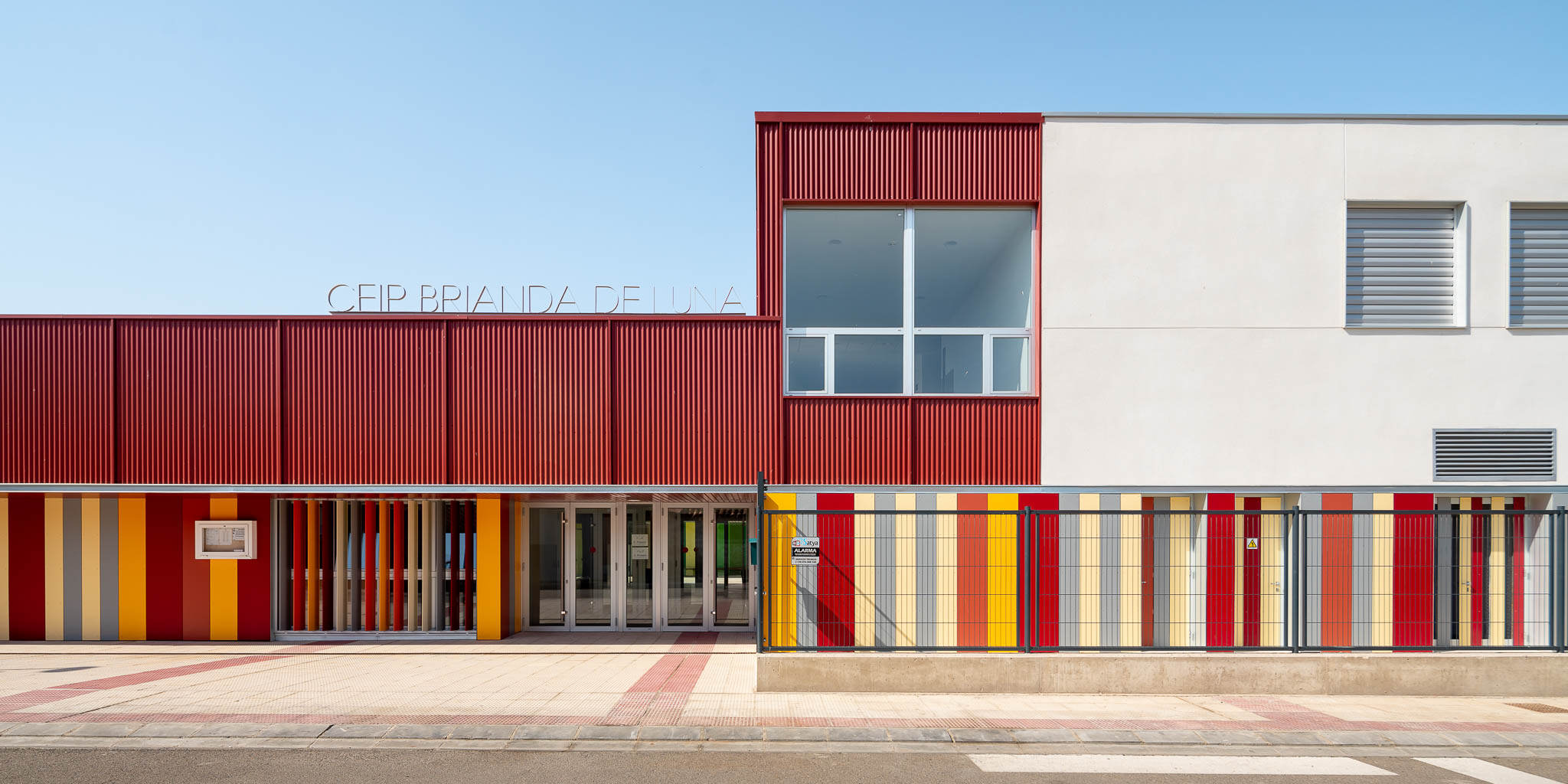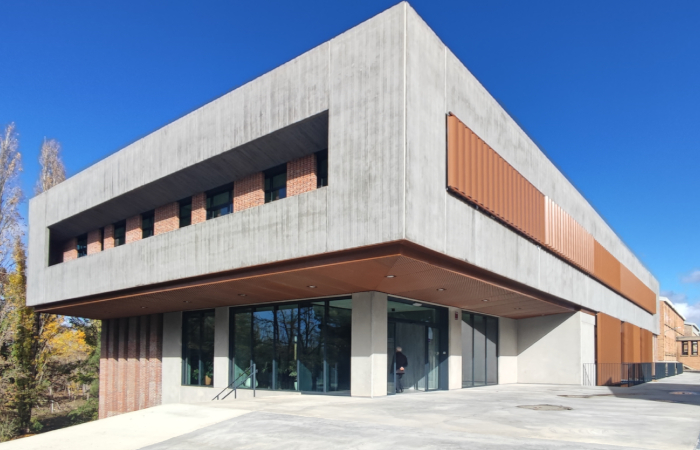Solar control using lattices at CEIP Brianda de Luna
The incorporation of aluminium lattices for the solar control of the new educational centre in Alfajarín, with their colour and functionality, are an added value to the construction project of the CEIP Brianda de Luna in Alfajarín, in which energy efficiency and the cohesion of the volumes are its best letters of introduction.
Alfajarín is a town near Zaragoza, with a population of more than 2,300 inhabitants and located next to the A-2, with an important industrial environment. The project for the new school was assigned to the office of Santiago Carroquino arquitectos, for the execution of an educational center with more than 8,000 m2 built, in which a nursery building of previous construction has also been integrated. The whole comes to offer service to a population that maintains a constant rate of growth and thus consolidates the services it provides to its inhabitants.
Location: Alfajarín, Aragon
Customer: Construcciones Mariano López Navarro
Architects: Santiago Carroquino Arquitectos
Photography: Arqfoto, Simón García
Typology: Educational architecture
Solar Control Needs
The educational complex is divided into two rectangular blocks facing each other and connected by a walkway, with an eminently rectangular floor plan. The buildings, designed in a ground-floor and elevation configuration, feature large windows on both the ground and first floors, as well as large open courtyard areas. The climate of Alfajarín is considered cold semi-arid, but like other towns on the Ebro River axis, it is known for its high temperatures in summer
Due to the characteristics of the center itself, the incorporation of lattices for solar control is of vital importance, both for the improvement in the habitability of the classrooms, and for the correct use of digital screens and projectors. As factors of added value provided by the design of Santiago Carroquino’s office, the quality of the materials used and the focus applied to the sustainability of the building must be highlighted. Strict control parameters have been established to achieve a centre with a low environmental impact during its construction and throughout its useful life.

Our contribution to the project
The incorporation of lattice systems using mobile slats such as
Umbelco UPO-150
and
UPO-250
for classrooms, allows efficient solar control, also improving the handling of electronic devices. For classrooms with complex drives, we have incorporated our slat control system that replaces electric motors, with consequent savings in both the short and long term. The control of natural light implies not only savings in the use of artificial light but also a significant improvement in the comfort of classrooms.
The UPO-250 medium format adjustable lattices, installed as roofs by means of a continuous pergolas with slats, allow greater versatility for the courtyard areas without detracting from the brightness of the classrooms located immediately below. The projection of shade is an advantage in the hottest seasons, while the possibility of varying the inclination of the slats adds options for the coldest seasons, in which natural light (and its thermal contribution) are very useful. Finally, it is worth highlighting the aesthetic integration of the lattices in the colour scheme of the rest of the building, which rounds off the feeling of cohesion of the architectural complex.


